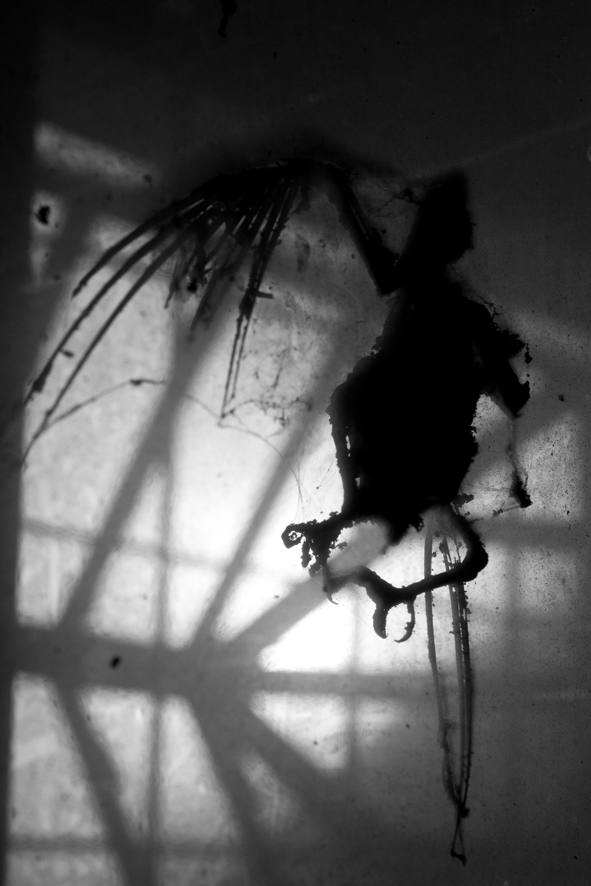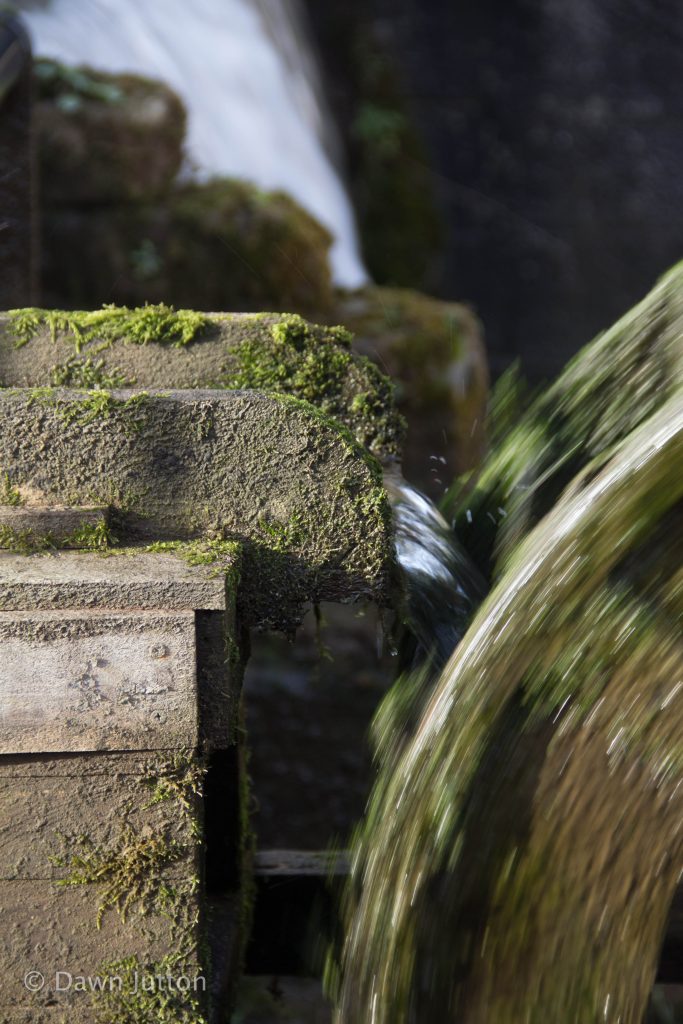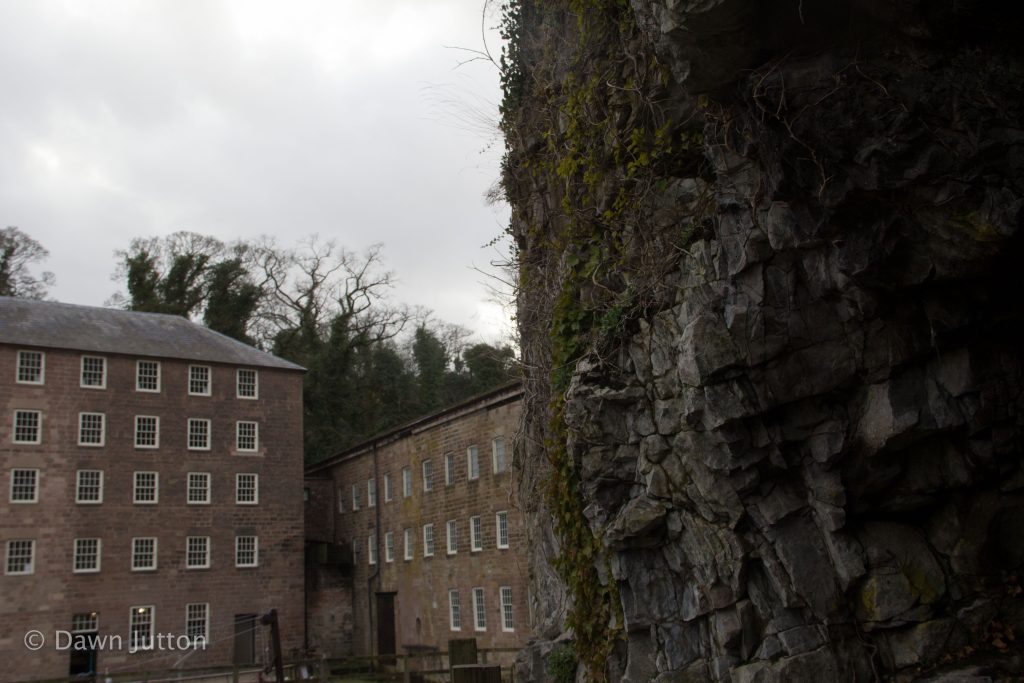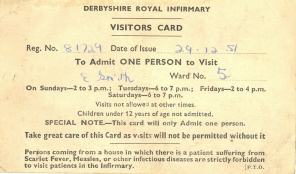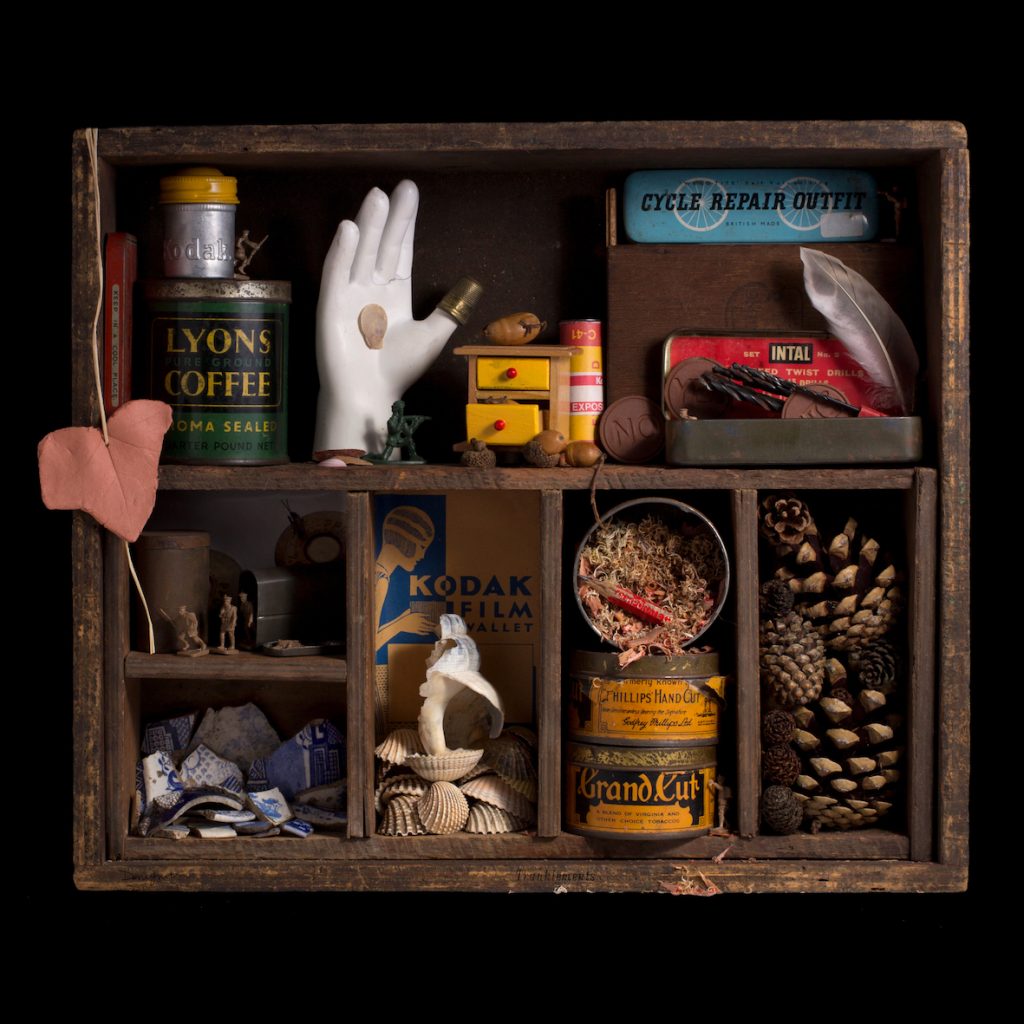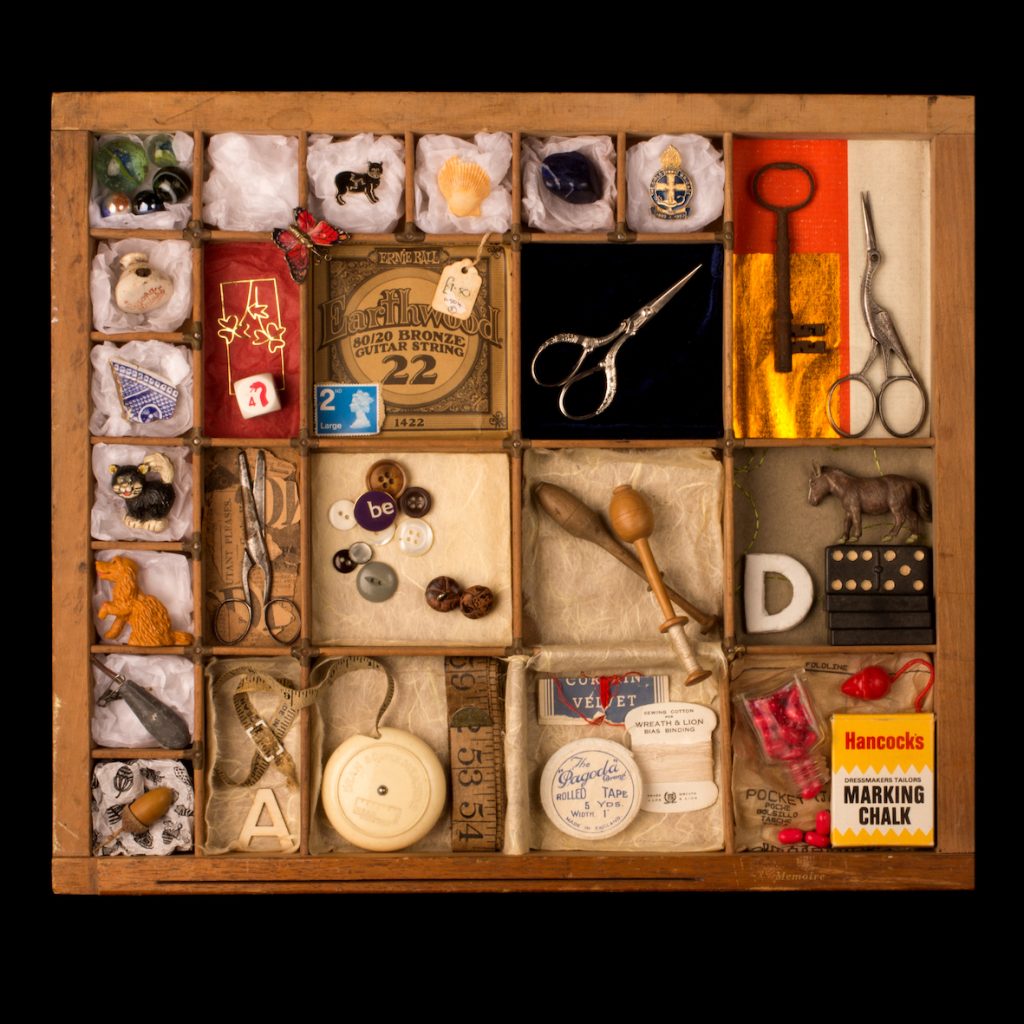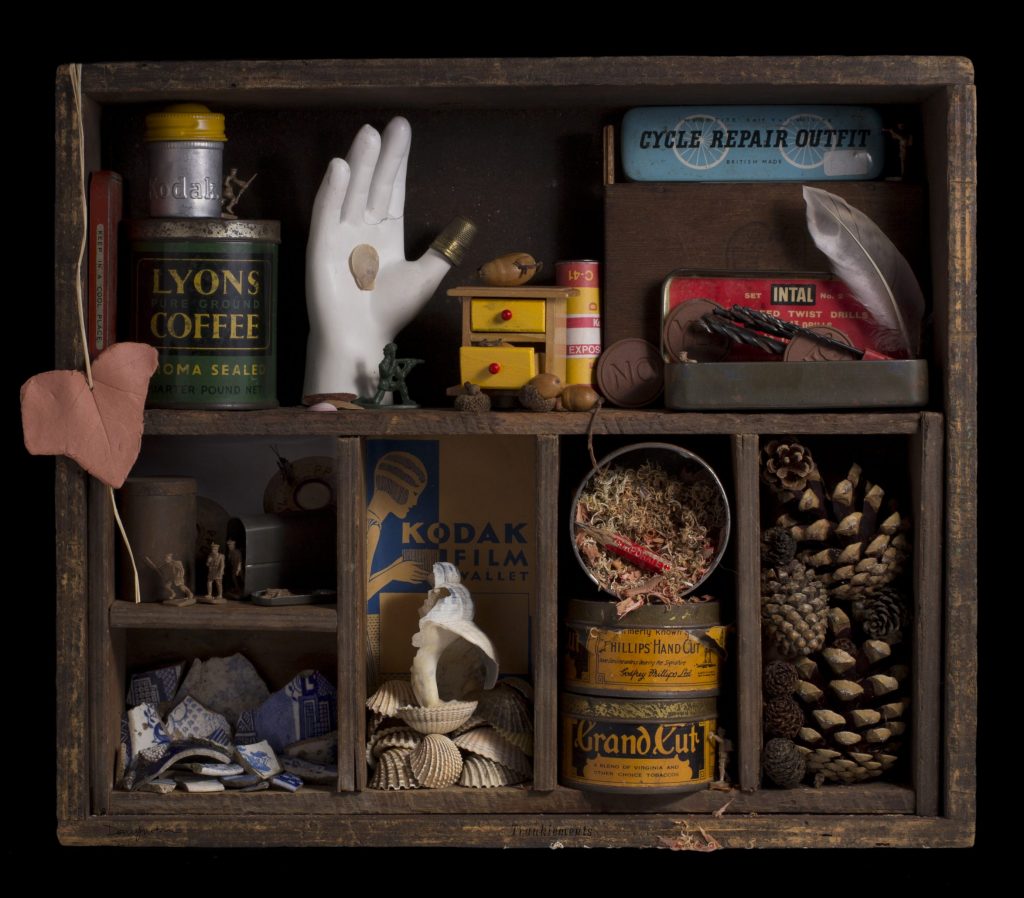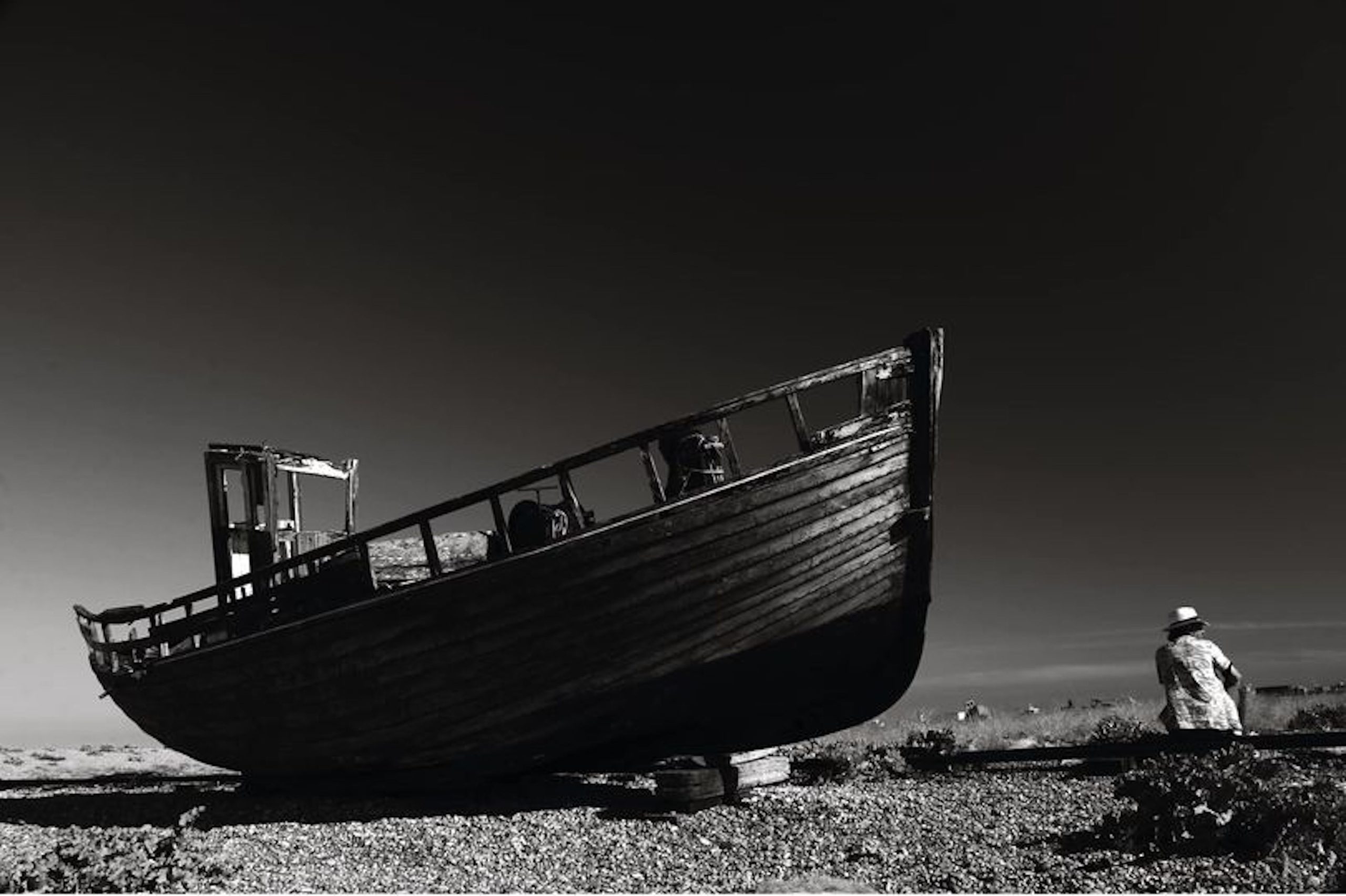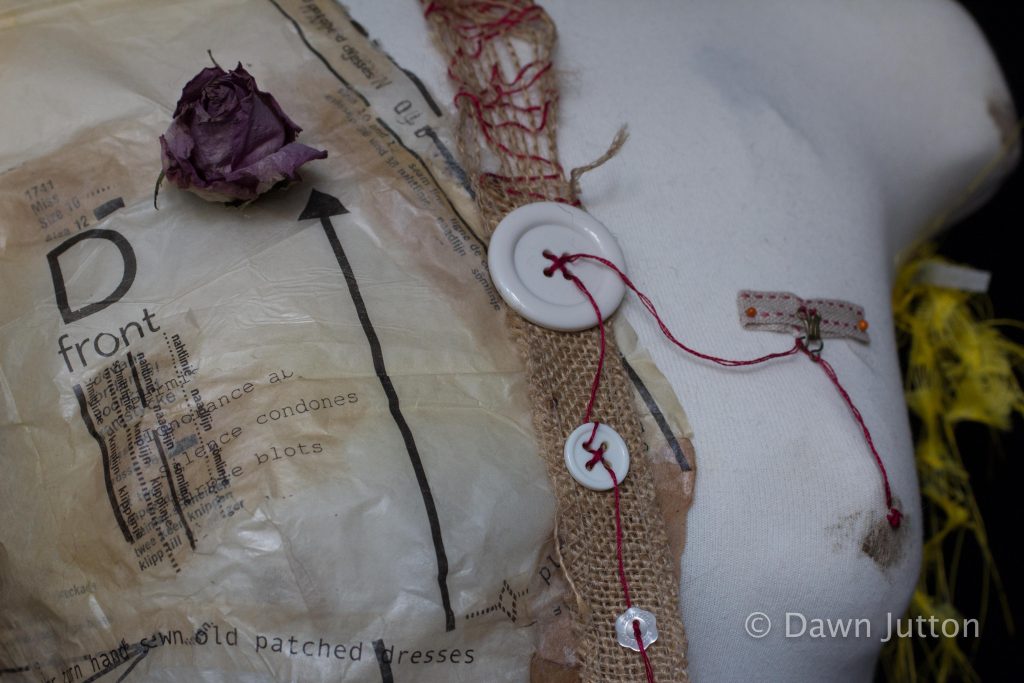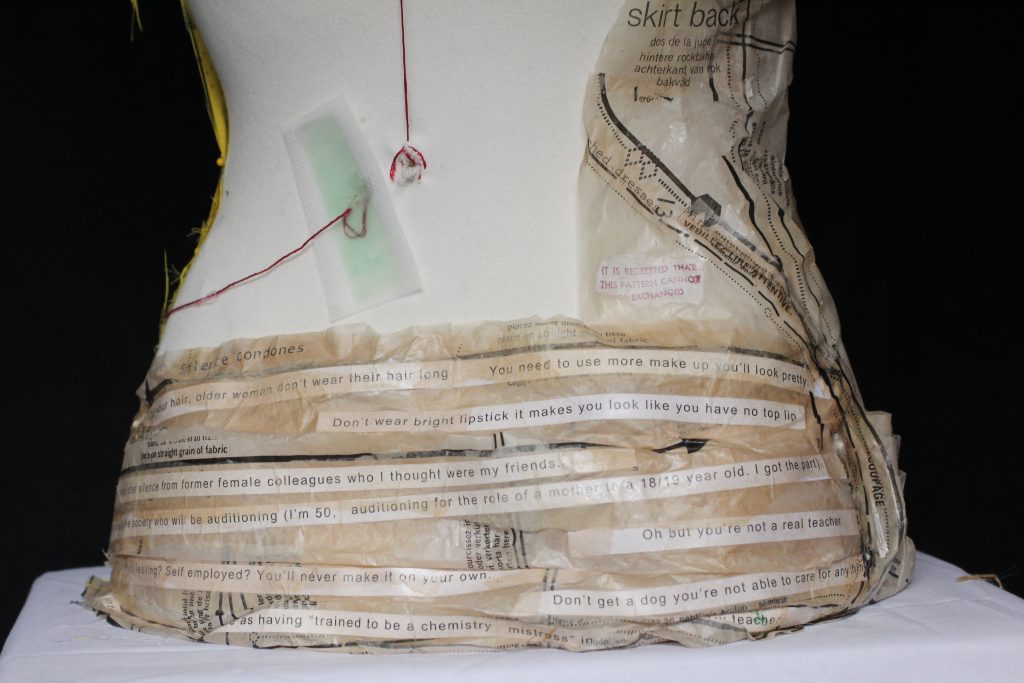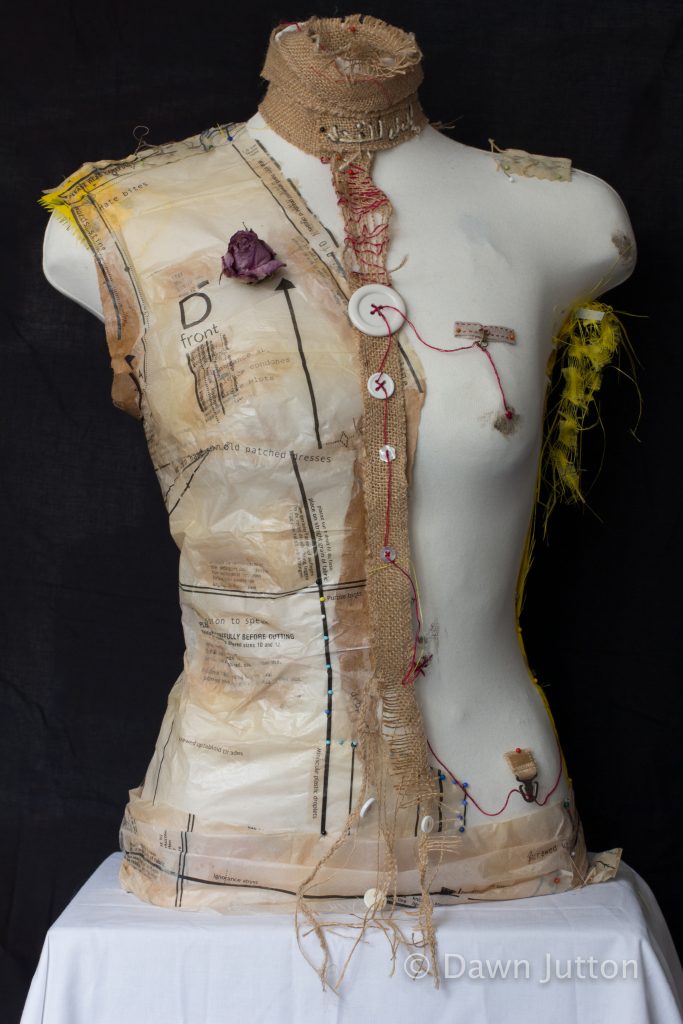Category: Uncategorized
The Gleaner
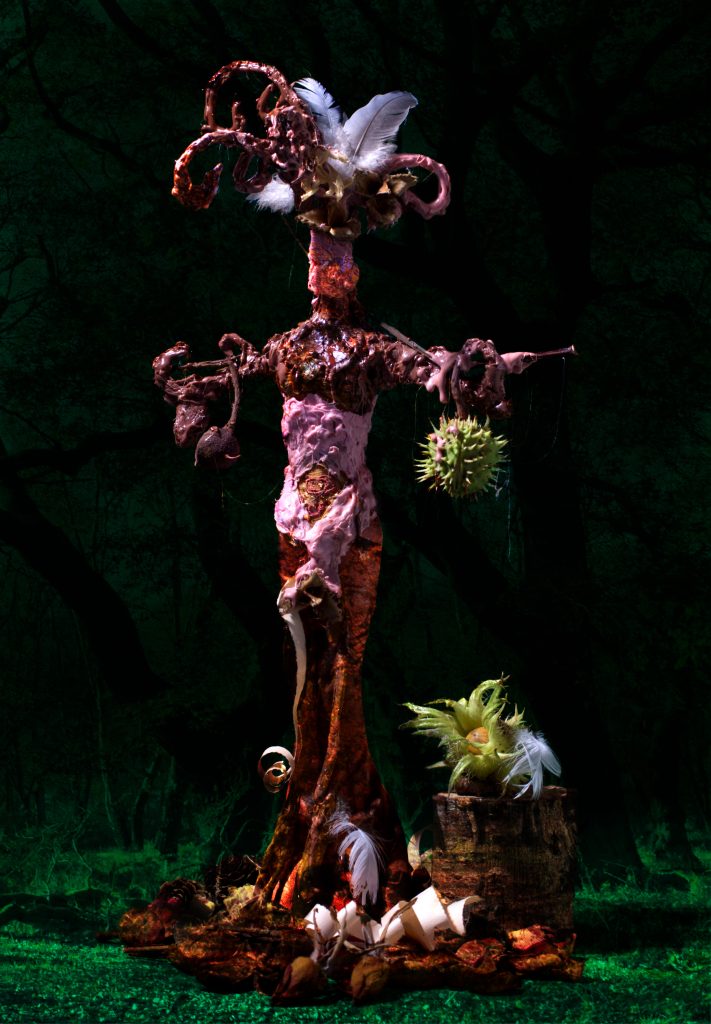
The Gleaner
Hope is the thing with Feathers
The earth spins and we hope
The answer to the riddle is hope
I hope for hope where there is none
(Lines from Hope soundtrack used for inspiration.)
This Gleaner emerges from an underworld of words and sounds of nature from the Hope Project soundtrack*. Through connecting with nature in a cyclical vision of time, she gives hope for a world where we re-attribute value to what has been decreed worthless.
The Gleaner gathers the discarded and the overlooked just as peasant women would gather left over grain and fruits from the harvest. In the tradition of still life painting, each object she has gleaned from the re-melted facial hair wax and wordless scrolled strips of newspaper to the green tree fruits, dried flowers and dessicating petals are symbols of the transcience of life communicating their own messages of hope.
*the Hope project was a collaboration between a sound artist and Rick Sanders who curated the exhibition after inviting 20 artists to respond to a soundtrack compiled from messages of hope left on a telephone answering machine during the Covid pandemic lockdown in 2020
On creating ‘Curiosity’
from UHDB medical museum and the Derwent Valley
by Dawn Jutton
Creating a new work necessitates curiosity. It is important to cast that curiosity wide, but that can be like trying to create a quality cloth with random strands of fraying cotton. However, what I am looking for among those complex, seemingly unrelated strands are interesting fragments to weave together and create work with context and depth to generate curiosity in the viewer.
So after a quick internet trawl my first ‘strands’ of research for this commission are images about Derby Infirmary alongside images from UHDB medical museum and information about Derwent Valley Heritage trail. This immediately led me to discover the influence of the Strutt family in the Derwent Valley during those early days of the industrial revolution in Derbyshire. As a photographer taking inspiration from heritage and landscape I needed no excuse to visit the Derwent Valley to tease out any links that might inspire some direction for my work.
As I wandered through the restored courtyards of Cromford Mills, therefore, I tried to look beyond the veneer of heritage and tourism into the distant hills for inspiration. What I found though, among the remnants of water powered innovation and dye stained walls, was an overwhelming desire to speak to the people who brought wealth to the new industrialists; to those who left their homes and families to work long hours in these huge new water-powered mills. What did the – mainly female – workers really think? Was life improved? How did it change their sense of community? What was their response to this new urge of men to mechanise and experiment with social change? Did they follow willingly – or even have an opportunity to lead- into this new world of science and social progress?
I also realised the determination to build Derbyshire Infirmary would be motivated in some part through necessity, as a response to increased accidents and health problems associated with working in confined, noisy and machine dominated spaces. Discovering Paul Elliott’s article in Medical History (2000)* set me off on a research journey to explore William Strutt’s application of architectural innovation and inventions to the original Derbyshire Infirmary – a subject he comprehensively discusses. As a member of the Derby Philosophical Society Strutt will also have recognised what Elliot describes as the ‘problems of internal hospital spatial organisation’ as discussed by the Enlightenment philosophers and philanthropists. Elliot also refers to Foucault’s description of this period as a time when ‘the medical gaze became institutionalised and inscribed in social space…’ .
I was now busy in the back of my mind pulling together strands from Foucault’s ideas of the ‘medical gaze’ with those earlier questions about women’s lives whilst still sifting through the UHDB library’s online medical museum collection. I realise that I keep coming back to two images in the UHDB museum catalogue; an early 20th century photograph of a queue of women visitors with baskets and a Derbyshire Royal Infirmary visitor’s pass from 1951. They somehow speak to me again about the role of women; the queue of women gaze at the photographer but are anonymous, suspended in a moment of waiting. Who are they? Who are they visiting? What is in those baskets, themselves symbols of womanhood and duty. Are they simply the eggs and fruit as directed on the later visitor’s card? Are the baskets waiting to be checked by the Ward sister?
Inspired by these artefacts the still life image I’ve created weaves together the strands of my research touching on philosophy, medical history and cultural heritage. It also draws on the 17th and 18th century Dutch influenced tradition of still life painting and the dramatic candlelit science paintings of Joseph Wright of Derby, a contemporary of William Strutt. The basket and the objects spilling from it become symbolic, each carefully chosen to create a visual metaphor that attempts to foreground the medical and cultural experience of women. Background elements allude to a supposed tension between the reliance of the poor on the quack and the apothecary and the powerful new medical institutions providing care for the wealthy. Most significantly ‘The Mistaken Kindness of Friends’ will attempt to challenge the viewer to ask questions; to generate curiosity.
Market Traces
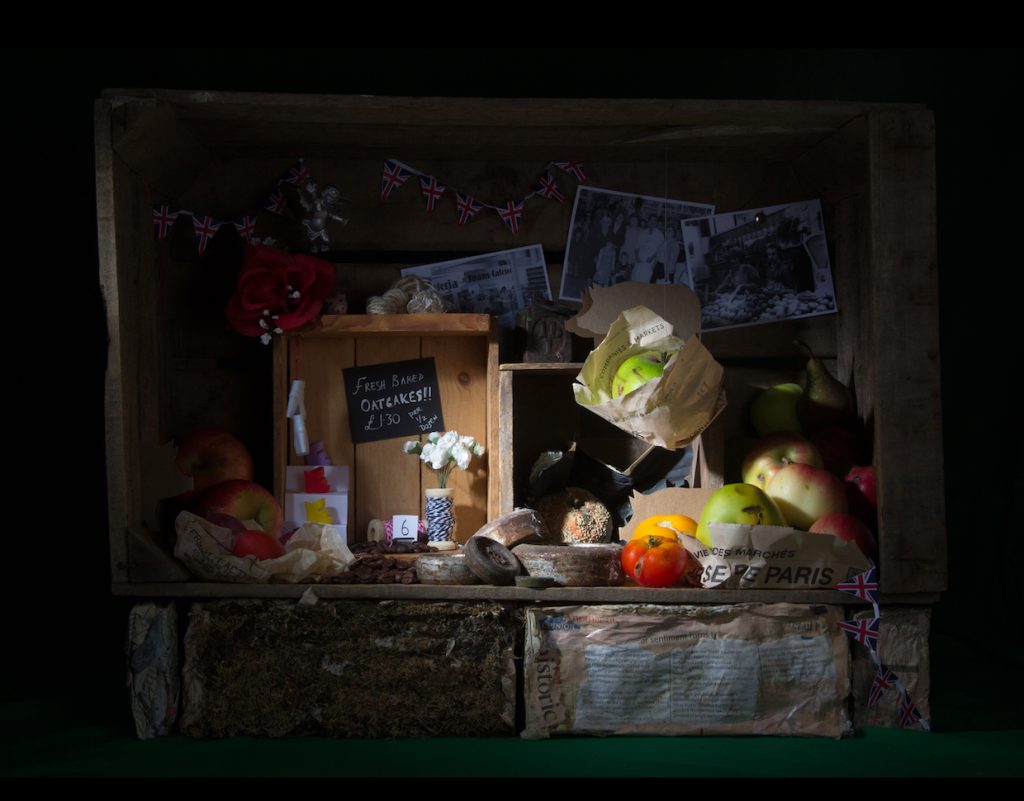
‘Market Traces’ is a simulacrum of a still life painting in the tradition of European painting popular when Hanley, Stoke-on-Trent was first given market rights in 1776.
Jutton has taken onboard the symbolism used in those paintings to create a photograph that use objects such as rotting and fresh fruit and chiaroscuro lighting to speak to the audience about the transient nature of human existence; in this image the fruit also refers to the transient nature of markets and brick-and-mortar businesses.
The careful placement of each element/object in the ‘stage’ set within a market crate represents and reflects on our obsession with nostalgia and continuity within city centres
RAISON: THE MISTAKEN KINDNESS OF FRIENDS
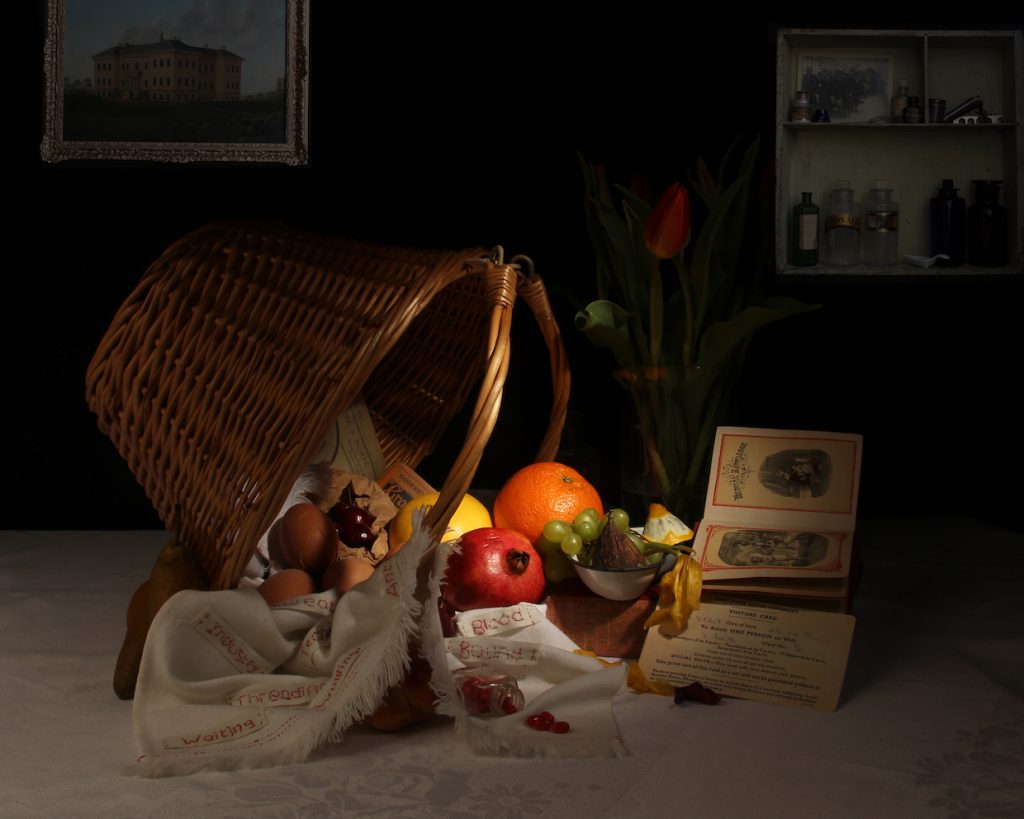
This image was the result of a lead artist commission for University Hospitals Derby & Burton Medical Museum. It is primarily a response to a photograph of women queuing for a visit and a 1951 visitor’s card from the collection (below).
In this final image the basket, as symbol of womanhood, spills its contents as a visual metaphor for the ‘medical gaze’ experienced by women and responds to wider research around philosophy, medical history and cultural heritage in the period of the first Derbyshire Infirmary.
The chiaroscuro style is inspired by the candlelit science themed paintings of Joseph Wright of Derby and uses the semi-obscure background elements to reference underlying inequalities in healthcare and the tension between apothecaries and pharmacists.
The title is taken from the visitors card and also refers to the Diderot ‘Encyclopedie’ linking it to two other pieces created for the Air Arts ‘Cabinets of Curiosity’ exhibition across the UHDB Trust sites.
Cabinet of Curiosities
After Diderot’s System of Human Knowledge
In the introduction to his Encyclopedie (1772) philosopher Diderot suggested juxtaposing references to the sciences, natural world and the arts to draw out new truths. He believed creating these to be the work of genius and the person to spot them, a happy one.
Inspired by Diderot’s ideas on the classification of knowledge, these images encourage us to be curious; to find new connections in the juxtaposition of random found objects. It may not make me a genius but it certainly makes me happy!
PoArtry
PoArtry is a collaborative project that is the brainchild of Rick Sanders, aka Willis the Poet and is a mash-up of visual art and poetry. The concept is a simple one; artists and poets are randomly paired together from names drawn from a hat. Each pair then has 3 months to work together to create new work inspired by each other’s existing portfolios. Dawn has been involved in the project for the last 4 iterations. www.poartry.co.uk
The Gleaner
Hope is the thing with Feathers
The earth spins and we hope
The answer to the riddle is hope
I hope for hope where there is none
(Lines from Hope soundtrack including the first line quoted from Emily Dickinson.)
The Gleaner emerges from an underworld of words and sounds of nature from the Hope Project soundtrack. Through connecting with nature in a cyclical vision of time, she gives hope for a world where we re-attribute value to what has been decreed worthless.
The Gleaner gathers the discarded and the overlooked just as peasant women would gather left over grain and fruits from the harvest. In the tradition of still life painting, each object she has gleaned from the re-melted facial hair wax and wordless scrolled strips of newspaper to the green tree fruits, dried flowers and dessicating petals are symbols of the transcience of life communicating their own messages of hope.
This piece was inspired by West Midlands based writer Roger Noon’s poem ‘The Sideboard (After Edip Cansever)’ in which he uses the word ‘tranklements’, a dialect word for precious and familiar ornaments that you might display.
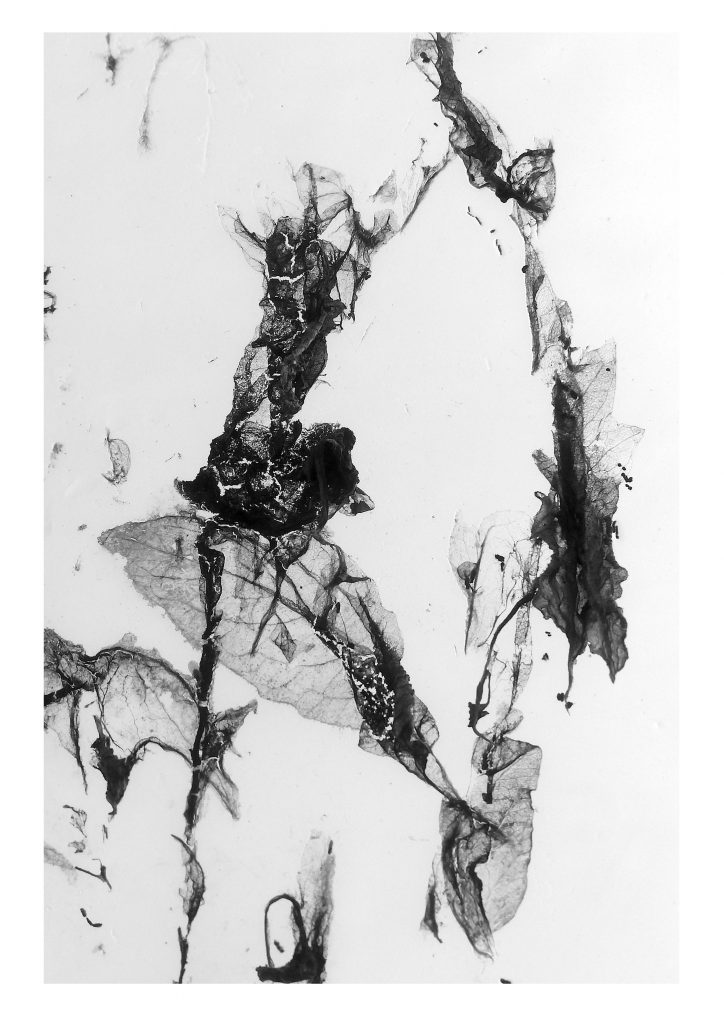
The Captain Said “Haven Light ahoy, boys”, the captain said waving our helmsman to starboard. We smelt fields, saw gannets shadow stars heard crashing rollers of betrayal. “Abandon ship”, the captain said, as he tapped his pipe on tilting rails. Wreckers scaled the broken bow lit by violent, smoking sunrise. We broke out cutlass and pistol but they were too well-armed. Hatch and cover splintered as blood foamed in the scuppers. “Help yourselves, boys”, the captain said patting his pockets, standing in conspiratorial greeting. Small boats came bobbing by, liberated our hard-sailed cargo. Sea boots crunched skullbone, slipped on our brains and guts as hands passed box and bag. “I’ll take my pay now”, the captain said. They gave it him in the guts with twisting rapier thrust then lead ball to his neck for luck. “I’m sorry, boys” the captain said when we greeted him on the other side, watched his black soul founder through ash, mast, spar and flame.
Randomly paired with poet Kezzabelle Amber I was inspired by her collection ‘Permission to Speak’ to create a response that captured the essence of her work; notions of female beauty and a particular poem about women and children in war torn areas across the world
Kezzabelle chose an old image of mine taken on a trip to Cyprus in the late ’90’s.

